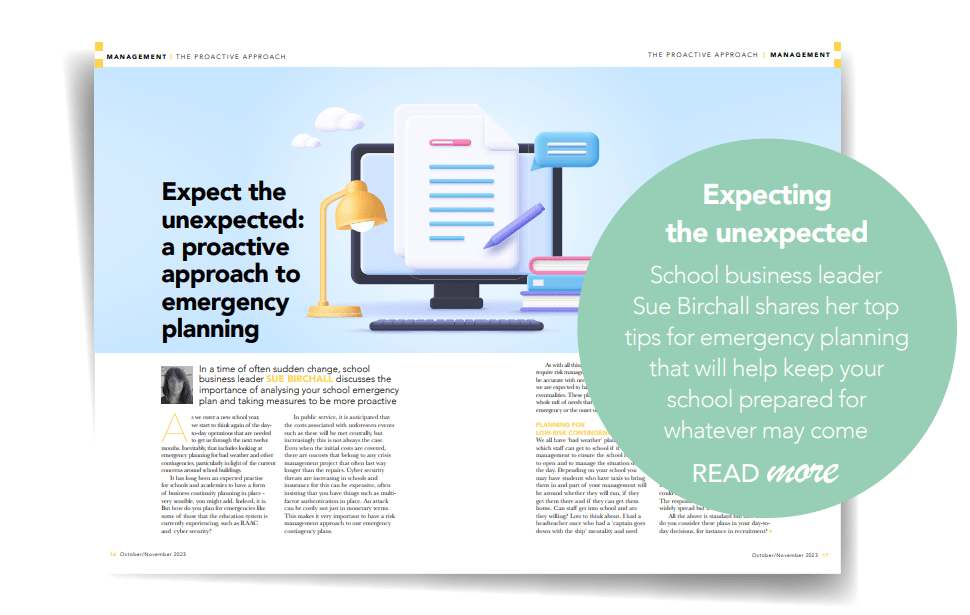
As a new school year begins, our minds turn to the daily operations that will sustain us throughout the coming months. Among these, emergency planning takes centre stage, especially in the context of today’s concerns regarding school facilities.
While having a business continuity plan is not new for educational institutions, the question arises: How do we prepare for the unforeseen emergencies that have recently shaken the education system, such as RAAC and cyber threats?
Our article delves into the critical aspects of risk management and preparedness, providing a comprehensive guide to address low-risk contingencies and high-impact challenges. We explore how an effective approach encompasses anticipating contingencies, considering factors like staff accessibility during inclement weather and alternative transportation options for students.
For significant disruptions that may require extended continuity measures, we emphasize the importance of a dynamic learning approach, remote resources, and lessons ready for facilitation in case teachers are unable to deliver them. Cybersecurity concerns also feature prominently, with a focus on incorporating risk management into IT development plans.
Managing budgets in the face of unforeseen events is another daunting task. We discuss how to plan and budget for emergencies, accounting not just for immediate expenses but also the ongoing costs of keeping plans up to date.
In these uncertain times, the principles of risk management must be integrated into all our plans and operations. We learn the significance of keeping our emergency plans current, establishing relationships with neighbouring schools for mutual support, and embracing the challenge with the proactive spirit encapsulated by Nelson Mandela’s words: “It always seems impossible until it’s done.”
Discover a wealth of insights and strategies for ensuring educational continuity by reading the full article in our magazine.




Be the first to comment